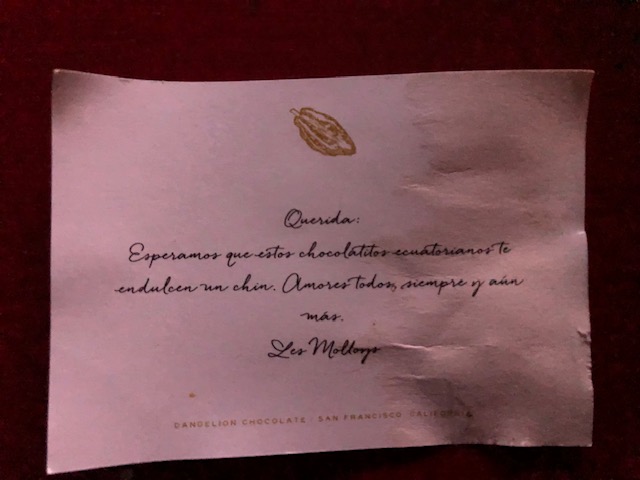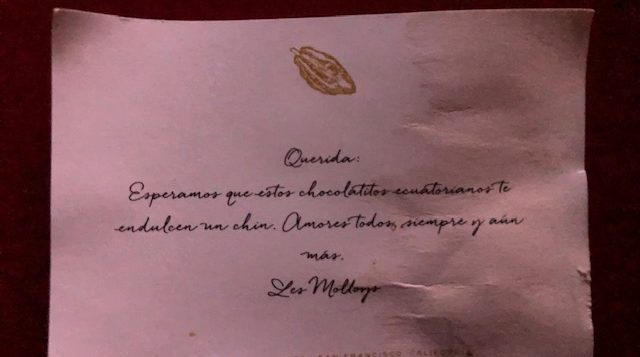
We were three lesbian couples of a certain age, all privileged enough to have apartments in Manhattan and country homes in Southold, a sleepy hamlet on the east end of Long Island. We had in common, among other things, the longevity of our partnerships and a worldview shaped indelibly by the second wave of feminism. For almost two decades, this sextet gathered several times a year, usually at our house — since we were, well, certainly not young, but the youngsters of the group by more than a decade. My spouse commandeered the barbecue grill and Sylvia Molloy invariably brought her famous poached pears and coconut cream.
There was something so magical about this constellation of personalities. From mid-afternoon until long after the stars came out, we would sit in the garden, eat and drink, share gossip, fret over politics and, most of all, laugh. The wild laughter is what stands out. I can’t now recall what was so amusing. Maybe we were laughing because of the pure pleasure of being together.
At first, and for a long while, I didn’t realize Sylvia Molloy was an “important person” in the literary world, the author of five novels and countless essays or the recipient of numerous prestigious awards. I knew vaguely that she had edited some book on queer readings of Latin American literature, but then most of us had published a book or two over the years, and certainly never talked about them. I had an early clue of her stature when, at one of these gatherings, her wife Emily Geiger grumbled about Sylvia not answering an email: a producer was asking for a film option on one of her novels, and Sylvia let it sink lower and lower in her inbox. This was something Sylvia never would have mentioned herself. The stories she told us were far humbler, such as when she accepted her first teaching job in New York without parsing the considerable distinction between New York City and New York State. Finding herself stranded in Buffalo, she spent all her weekends and most of her salary flying down to explore the big city. I could just picture a young Sylvia getting off the plane that first day and scratching her head in bewilderment. With earfuls of such amusing, self-effacing stories, I would only learn of her literary prominence accidentally. Shortly after this, I stumbled upon a display of her books in a bookstore window in Cartagena. The books were in Spanish and beyond my rudimentary reading level. I took a photo and sent it to her.
Sylvia found all that Northern snow intolerable and left Buffalo after two years. She moved to Vassar, then on to Princeton, Yale, and NYU. In 1972 she was one of the first women ever to receive tenure at the old boys’ club that was Princeton. She was so beloved by her students, so influential in their lives, that to ask any of them about her today, over a decade since she retired from NYU, is to open the floodgates and watch reservoirs of adoration and gratitude pour out.
Ben Sifuentes-Jauregui and Patrick O’Connor, who studied with Sylvia at Yale, felt a bit like Sylvia’s “neglected middle children,” sandwiched between her much longer stints at Princeton and NYU. Patrick remembers Sylvia’s “exciting if alarming habit of opening her eyes wide at you if you said something unexpected,” leading him and his classmates to compare her to una lechuza, an owl, a universal symbol for wisdom. Ben starts an homage he wrote to her by reflecting on a line by Mallarmé: On a touché au vers. “Touching the verse also means tampering with it—of course, it was with Sylvia that I learned another lesson, that is, that literary thing touches and tampers us… Sylvia, you touched and tampered so many of us, so beautifully with your life and pedagogical example.”
For a cluster of her students, to study with Sylvia was to become a lifetime member of an unofficial club, Los Molloys. When Sylvia’s cancer came back after a long remission, Los Molloys sent monthly care packages to her Long Island home: boxes of Vermont cheese, Babka, ice cream, chocolates, always with a note signed “all our love, Los Molloys”.
One of Los Molloys, Javier Guerrero, wrote to me:“I followed Sylvia Molloy to New York University. Her presence was reason enough for me to pursue the PhD at this university. She was more than inspiring; she managed to get the best out of all the people who are lucky to be around her. I came to New York for Sylvia Molloy, and this has been the best decision of my career as well as one of the most important choices of my entire life.”
As I came to know Sylvia a bit better as a scholar and author, I invited her to speak at the City College of New York. Her talk was based on a book she was writing, something to do with the role of translators as cultural emissaries. Her audience was comprised of faculty and students from the Department of Foreign Language and Literature, and I was the only gringo in the room. As she was about to start, she looked right at me and asked if she should speak in English. I could feel the linguistic elasticity in the air that everyone seemed to take for granted- everyone but me, even though I had taken numerous Spanish language courses and had just returned from a year in Spain. Mortified, I told her I would muddle through.
After her lecture, Sylvia took questions. When the question was posed in Spanish, she answered in Spanish, but if a single word of English was spoken, she pivoted into English without noticing and stayed there until a word in Spanish pivoted her back. I thought she didn’t notice, but later she compared this codeswitching to her urban/rural lifestyle: “What I do with languages, I do with our homes. Jumping from one place to the other.”
Sylvia’s charming old country house in Southold was central to her writing. It was where she did most of her work, where her brain could be uncluttered from her life in the city, “where the spaces for thinking, or more precisely, to let go of thinking, were fewer.” She spoke about the similarities between the two houses where she had lived–her parent’s house in Argentina as a child and this one she owned with Emily in Southold. “The Long Island house appears to be the Long Island house, but then, certain areas look like my parent’s house in Argentina. Namely, the yard – both houses had a yard—and suddenly I remember the yard, but I don’t know which of the yards I’m remembering.” The two homes mingle within her mind, merging and transforming events that did take place into an imagined memory that did not actually occur. For Sylvia, one memory becomes a contaminación of the other; they become so entwined that “in the end you don’t know really what you are remembering, what you are inventing, what you are contaminating, but the spaces blend into each other.”
These central themes of memory, writing, and contaminación are already evident in Sylvia’s first novel, “Certificate of Absence,” published in 1981 as En breve cárcel. A woman is writing in a small room, reflecting on a past relationship and anticipating a future one, while sifting through fragments of dreams and memories, contaminating them, and transforming them through writing.
Sylvia saw this process as the wellspring of all her work:
“I always say, and it’s the truth, I don’t have too much imagination…. like, say, García Márquez has. But very early on, my source of writing, my source of inspiration, were memories. What had happened to me, but in a very loose way. Not only what had happened to me, but memories that I heard from others that I remembered. And all that past — my own and unaffiliated — was a source of literary creation, very useful to me and very fertile.”
Sylvia recalled her mother and aunt sewing in the next room when she was a child. They would collect and accumulate scraps of fabric and store them in a drawer, to be used as needed. This became her own model for working: “My fiction is a bag of scraps… That is my way of writing. Working by accumulating scraps.”
This particularly female approach, especially within Latin American literature, liberated the conventions of the genre. As Sylvia describes it:
“The mother is the carrier of the stories. … But what’s interesting in the Latin American autobiography is that the specific official autobiographic genre is so strong. I mean the genre where the autobiographer builds his own image or his own statue for posterity and women become excluded. The woman provides material, but the writer – I’m talking about the 19th century- the writer, generally, is the son or the husband, the public figure, the public man.
And that maternal story remains as utilitarian material.
“But we must notice how women’s autobiographical stories emerge. And certainly, they start at the end of the 19th century, but then in the 20th century they emerge in different forms. One of the interesting things about those women’s projects is that — and, in a sense, I include myself in this group – the notion is that this material is not directed to build a public statue, an icon. Instead, it’s loose or thrown for the consumption of the reader. And that genre liberation, at least in Latin America, happens above all through the writings of women.”
Sylvia somewhat modestly included herself in “those women’s projects” that liberated the autobiographical genre. I have only begun to realize her trailblazing paths that overturned conventions in other ways as well. In her brilliant essay, “Too Wilde for Comfort: Desire and Ideology in Fin-de-Siecle Spanish America,” she simultaneously expanded the emergent field of lesbian and gay studies beyond its Eurocentric focus and exploded the homophobic discourse of Latin American literary criticism at that time. Her disciple, the scholar Javier Guerrero, reads perceptively beyond the text of Sylvia’s essay, seeing in the figure of Sylvia herself someone who, a la Oscar Wilde, with wit, intellect, and nonconforming physical presence, was poised at another fin de siècle to upset and challenge the hegemonic social order:
“Likewise, the intervention of Sylvia Molloy, her gendered body at the heart of the academy, her short hair, challenged the critical machinery and decisively disrupted its circulatory system. It is then that another end of the century is forged, one much more lustful and transvestite, one more appealing and complex.”
Her playful humor, her barbed wit, her keen intellect, her iconoclastic spirit — these were just some of the things that made Sylvia so special. What I would give to sit in the garden with her once more. Our brilliant constellation of six dimmed forever as she slipped away with no big farewell, no “certificate of absence,” a phrase she borrowed from Emily Dickinson — which seems a fitting way to end:
We’ll pass without the parting
So to spare
Certificate of Absence—
Deeming where
I left Her I could find Her
If I tried—
This way, I keep from missing
Those that died.
1 from Soledad Marambio’s video interview, Retazos Una Conversación con Sylvia Molloy, 2019. All direct quotes from Sylvia Molloy come from this interview.
2 “Sylvia Molloy, “Too Wilde for Comfort: Desire and Ideology in Fin-de-Siecle Spanish America,” Social Text, 1992, No. 31/32, Third World and Post-Colonial Issues (1992), pp. 187-201. Published by: Duke University Press.
3 Javier Guerrero, “La corta cabellera de Sylvia Molloy: in memoriam,” Santiago, Julio, 15, 2022.






